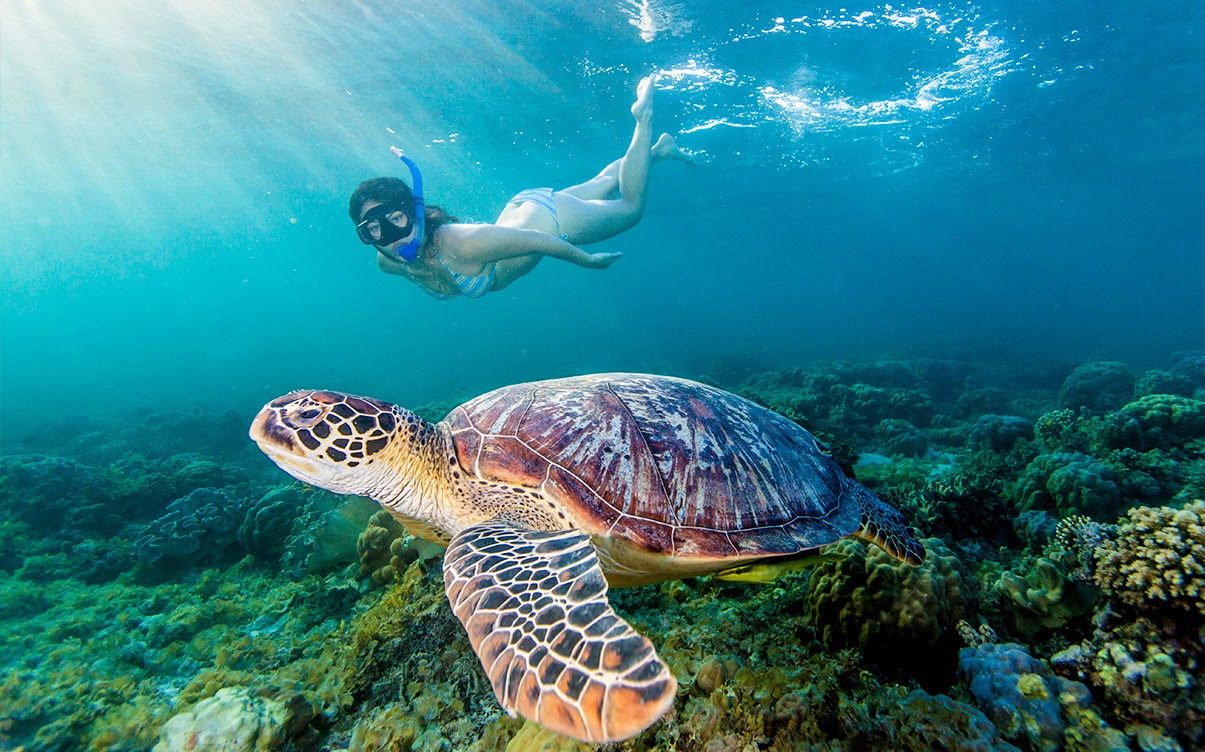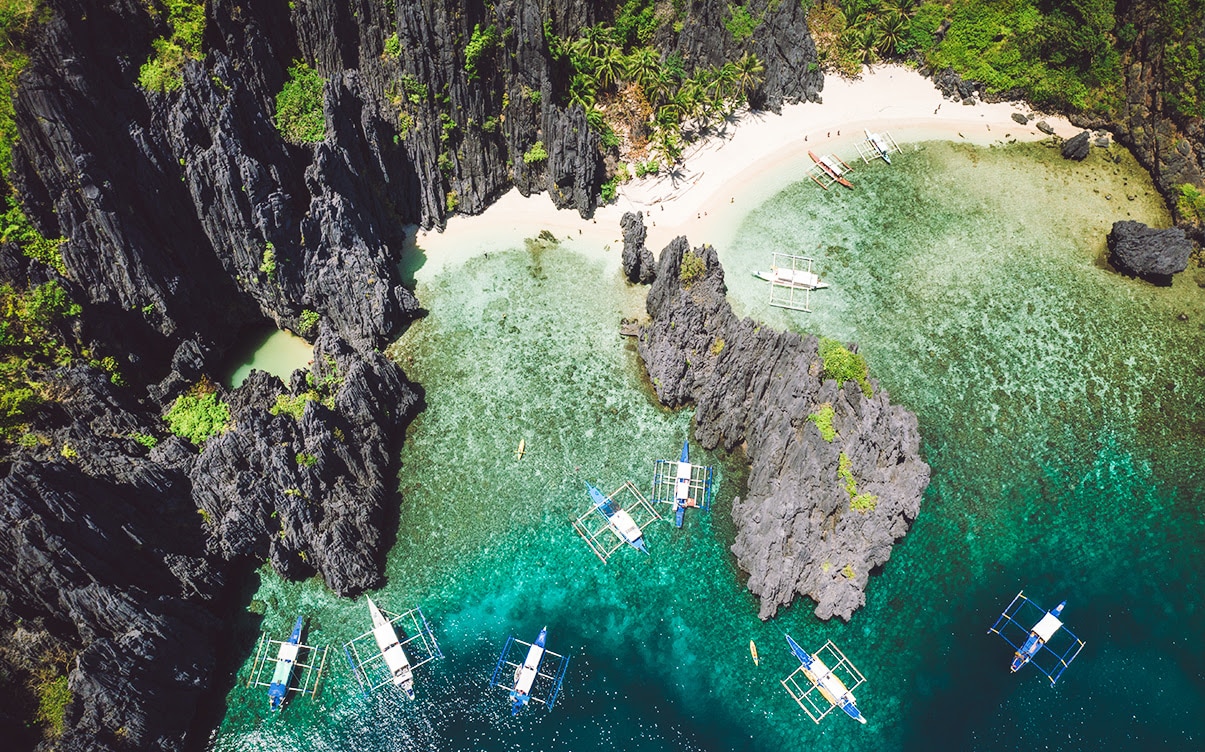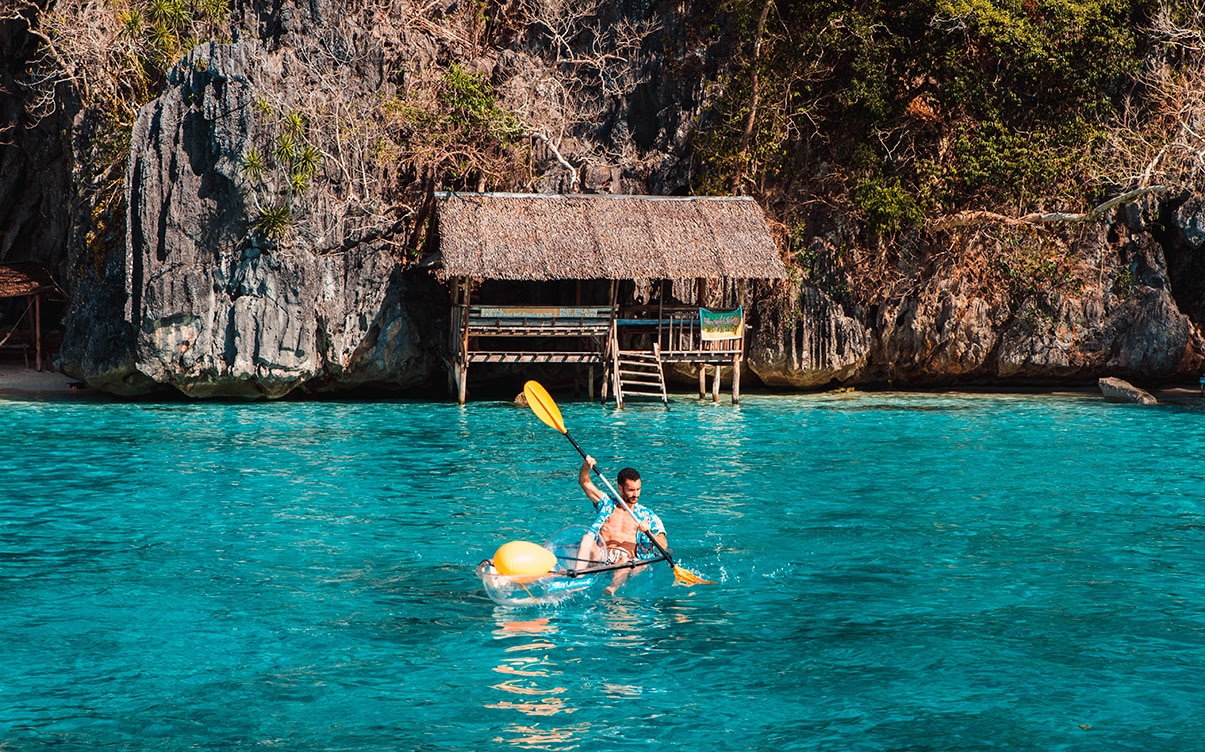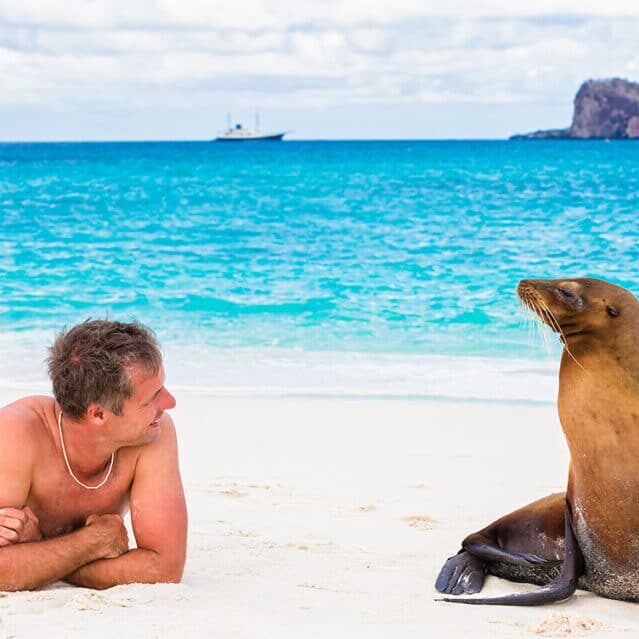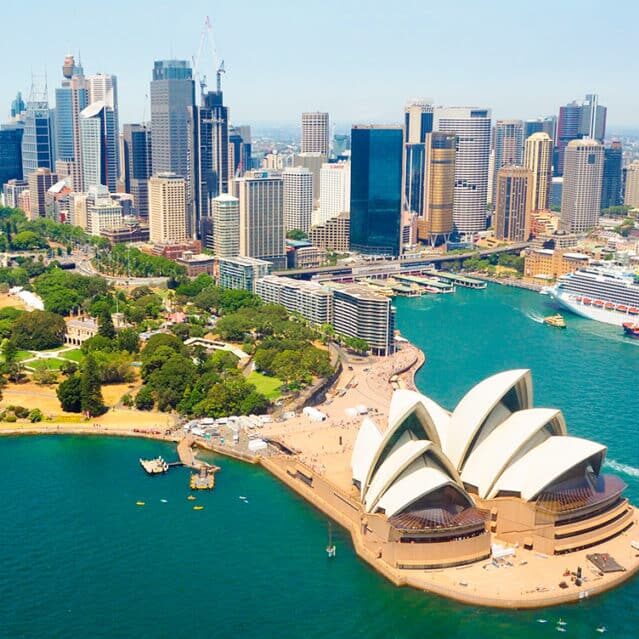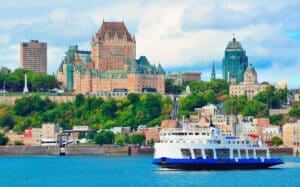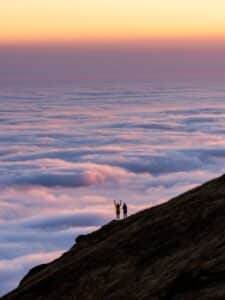Philippines Travel Itinerary: Our 1-4 Week Travel Suggestions
Disclaimer: This post may contain affiliate links. Please see our Disclosure Policy and Advertiser Disclosure for details.
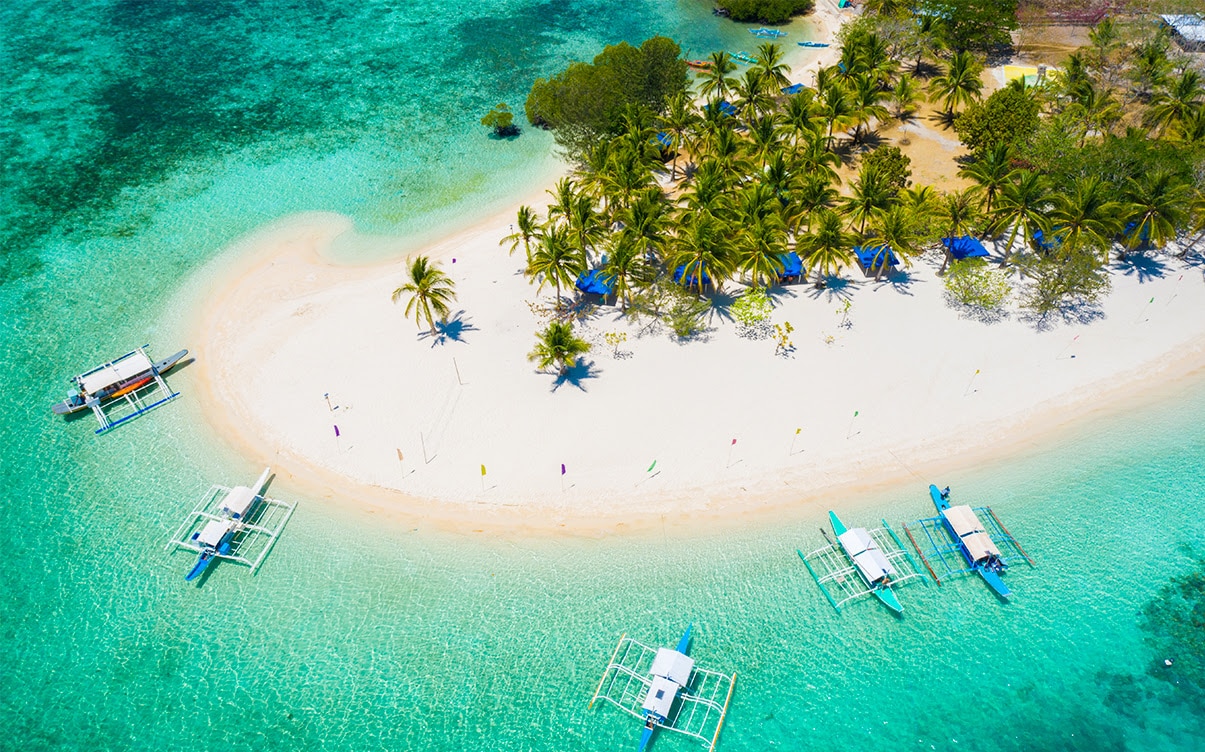
The Philippines, officially known as the Republic of the Philippines, is one of the many countries in Southeast Asia made up of a variety of tropical islands. In fact, it has over 7,600 islands, ranging from tall volcanic peaks and populated land encompassing the eleven largest islands (where 95% of the country’s total landmass is concentrated), all the way to tiny islands barely more than those Far Side “mound of sand and a single palm tree” islands.
If you want to visit the Philippines, you’re in luck; there’s a ton to see and do, and the sheer variety means you can spend months exploring and still feel like there are things to see and do when you’re done.
We’ve put together itinerary suggestions for 1, 2, 3, and 4-week adventures in the Philippines, as well as some general information that can help you forge your own path, so let’s get started!
One-Week Itinerary
For just a single week in the Philippines, you could easily spend the whole thing just exploring Manila, the capital of the country, and a bustling metropolis to rival the likes of New York City.
There’s a ton to see and do:
- Visit the National Museums of Art, Anthropology, and Natural History. This cluster of museums in downtown Manila are incredible and definitely worth seeing if you have any interest at all in museums.
- Travel via Tuk Tuk. The Tuk Tuk is essentially a covered tricycle with an experienced local at the wheel, taking you anywhere you want to be (within reason), like a taxi. They aren’t the most efficient means of transport, but they’re perfect for experiencing the city at ground level.
- Take a dip in an infinity pool. Infinity pools abound on the rooftops of tall buildings in Manila, where the water goes right up to the edge of the rooftop and gives you a completely unobstructed view of whatever the building overlooks. They’re positively incredible around sunset.
- Anywhere, at night. In many places around the world, you’re advised not to stay out after dark due to the risk of crime. Manila, in particular, is fairly safe – the State Department doesn’t even have a travel advisory for it – and there’s both a thriving nightlife and a lot of incredible light-based events and experiences scattered throughout. If you’re there over a holiday, it’s even more incredible.
If you want to go beyond Manila itself – and really, you should – there are plenty of other things you can do with a short trip away. Just remember that Manila traffic, even just getting outside of the city, can be extremely dense, so plan plenty of time to move.
One great destination to travel for a couple of days is Cebu City. Cebu City will require a quick flight – don’t worry, domestic flights are frequent and common – and is packed with the history and culture of the country.
Other things you can do in a week include waterfall tours, a hike or jeep-based tour up to one of the volcanic calderas and crater lakes, and exploration of the local national parks.
Two-Week Itinerary
If you’re adding a second week to your trip, it’s a great idea to step away from the hustle and bustle of the cities and find some of those more isolated resorts to spend some time. Islands such as Bohol and Panglao – located in the Central Visayas – are incredible for this. Plan to spend at least a couple of days exploring the beaches, waterfalls, underwater dive sites, stunning hill-and-valley landscapes, and hikes. You can easily spend a whole trip on leisure and outdoor adventures on these islands and feel fulfilled having done so.
A great option to spend a day is to visit the island of Siquijor. You need to take a ferry out to the island – there’s no local airport – and while it’s a fairly renowned tourist spot, you can say the same thing for 2/3rds of the Philippines, so that’s not saying much.
There’s a ton to see and do on Siquijor, including visiting the Cambugahay Falls, the palm tree swing at Coral Cay, and exploring the tropical beaches and crystal-clear waters. It’s a great place to spend a few days vibing if you want somewhere harder to access and thus less populated.
Another option is to head north from Manila instead of south and visit Luzon. There are a lot of incredible things to see and do in Luzon, but one of the best is to visit Banaue, home to tall terraced hills full of rice fields, both an iconic view of the Philippines and a UNESCO World Heritage site. There are also some incredible hikes, more beautiful waterfalls, and rural culture.
Just be aware that if you’re up in this area and outside the major cities, you’re likely going to be spending your nights in rustic hostels or other rural accommodations. There are no hotels or resorts in these villages.
Three-Week Itinerary
If even two weeks feel cramped with all you want to see and do, spending three weeks in the Philippines is a great amount of time.
Since a lot of your time in the Philippines will be taken up with travel time, a three-week span is best for doing some of the tourism you might want to do in a shorter trip but can’t justify because of the travel time spent getting there and back. For example, going island-hopping and seeing a bunch of various geographic features scattered around. Normally, you’re going to be spending a lot of time in boats getting from destination to destination, and that can feel like a waste for how little you spend in each location. When you have more time available, though, it’s much nicer.
There are a ton of places where these tours can start, including El Nido, Cebu City, and Manila itself. Be sure to review the various destinations each tour will take you, and how long you can spend in each. Also, make sure you’re up bright and early, ready to go, so you can spend as much time in the day out and exploring as possible.
Don’t forget that out here in Southeast Asia, there’s a ton to see beneath the waves as well. From reef diving to swimming with sharks to whale watching, as long as you’re willing to get wet, you can easily double the number of things you can do at any destination.
Four-Week Itinerary
When you’re upgrading your trip to a whole month, you can see and do just about anything you might want to do in the whole archipelago. Well, most of the archipelago. Okay, so there are entire massive regions you won’t even visit, but that’s okay! There are some reasons for that, and we’ll get to them later.
One thing to keep in mind for a month-long trip is your visa. The Philippines gives most travelers a free 30-day visa, but a four-week trip does potentially run the risk of staying over. You can extend your visa for a fee, but you need to make sure you remember to do that before you run into trouble.
There are two ways to approach a four-week vacation in the Philippines. The first is to add more destinations, so you’re sure to see and experience as much as you possibly can. That’s fine, but honestly? After the first couple of weeks, it ends up feeling exhausting to be on the go, trying to adhere to a tight itinerary the whole time. It’s also much harder to recover if you have a bad day and miss a check-in somewhere.
The other option is to simply take all of what we’ve written above and extend the number of days you spend in each area. Giving yourself time to breathe and the flexibility to not worry if you end up stuck in traffic for an extra hour is well worth it. After all, a vacation in a tropical archipelago should be relaxing, shouldn’t it?
If you want to add more to an already-packed itinerary, here are some options to consider:
- Coron. Coron is one of the most popular resort-style destinations, like a more mountainous Maldives. It’s usually packed, so plan accordingly.
- Port Barton. One of the more recently upcoming tourist spots, Port Barton is centrally located enough for a bunch of day trips to fill a week on its own if you wanted.
- Siargao. If you’re into surfing, this is one of the best places on the planet to catch the waves. It’s also incredible for waterfalls, mangrove trips, and evening parties.
With so much to see and do, you can fill a month in a ton of different ways.
Tips and Info for Philippines Travel
Before we round things out, let’s talk about a few of the must-know tips to make a trip to the Philippines go smoothly.
Make sure to carry plenty of cash. The Philippines is still relatively new to the whole tourism thing, and a lot of their more outlying destinations might not have functional ATMs, and many of them don’t even have working electricity. You’ll be fine in larger cities like Manila, Cebu, and Boracay, but many places either don’t have ATMs at all or only have one, and they can run out of cash.
Stick to bottled water. Unfortunately, sanitation in the Philippines is pretty spotty. Even in tourist destinations like El Nido, you run the risk of spending days bouncing between toilet and bed if you drink the tap water. Fortunately, bottled water is cheap and readily available, so you won’t be left without anything to drink.
Pack light. You’ll be getting on and off planes and boats constantly while you’re island-hopping, and you definitely won’t want to waste time wrangling large and difficult luggage.
Expect to be offline. Just like how electricity can be spotty, so can cell service and Wi-Fi. Cell service is the most reliable, so getting a local SIM card and a SIM-powered hotspot will save your bacon.
Visit between December and May. This is the dry summer season for the Philippines, with a bit of the shoulder seasons on either side. The wet season is more prone to overcast days, torrential downpours, canceled events, storms, and even typhoons, and you don’t want to get stuck in any of that. Enjoy the summer sun instead. April, May, and June are the peak of summer, but they are often so packed with both tourists and locals that it’s both too expensive and too crowded to enjoy like you want to.
Avoid Mindanao, Marawi City, and the Sulu Archipelago. There are almost definitely beautiful places to see in those areas, but these are the most dangerous places in the Philippines. In fact, while the Philippines, in general, has no warnings from the State Department, these locations have level 4 warnings due to terrorism, kidnappings, violence, and other dangers. Looking at a map, it feels like a huge area of the country is off-limits, but trust us; there’s plenty to do in other regions where you’re infinitely safer.
Dress properly. The Philippines are going to be hot and humid pretty much whenever you’re there, so you’ll pack for that weather, but pro tip: bring a blanket or some longer clothes too. Filipinos love air conditioning, and some of their facilities, especially airports, can be downright frigid.
Similarly, remember that a lot of what you’ll be doing is walking through sand, mud, and similar terrain. Sandals you don’t mind working to the point of failure are essential. Water shoes are also handy. An umbrella is a lot better than a poncho or raincoat, too.
Don’t worry about the language. While the native language is Tagalog, aka Filipino, just about everyone speaks English, so you should be fine. Learning a few key phrases will win you smiles but won’t be essential.
Visiting the Philippines is an incredible experience, and we highly encourage all of you to give it a try. Maybe don’t pick it as your first globe-trotting destination, but if you’re an experienced adventurer, it’s an excellent place to visit, whether it’s for one week, four, or more.
You may also enjoy:


